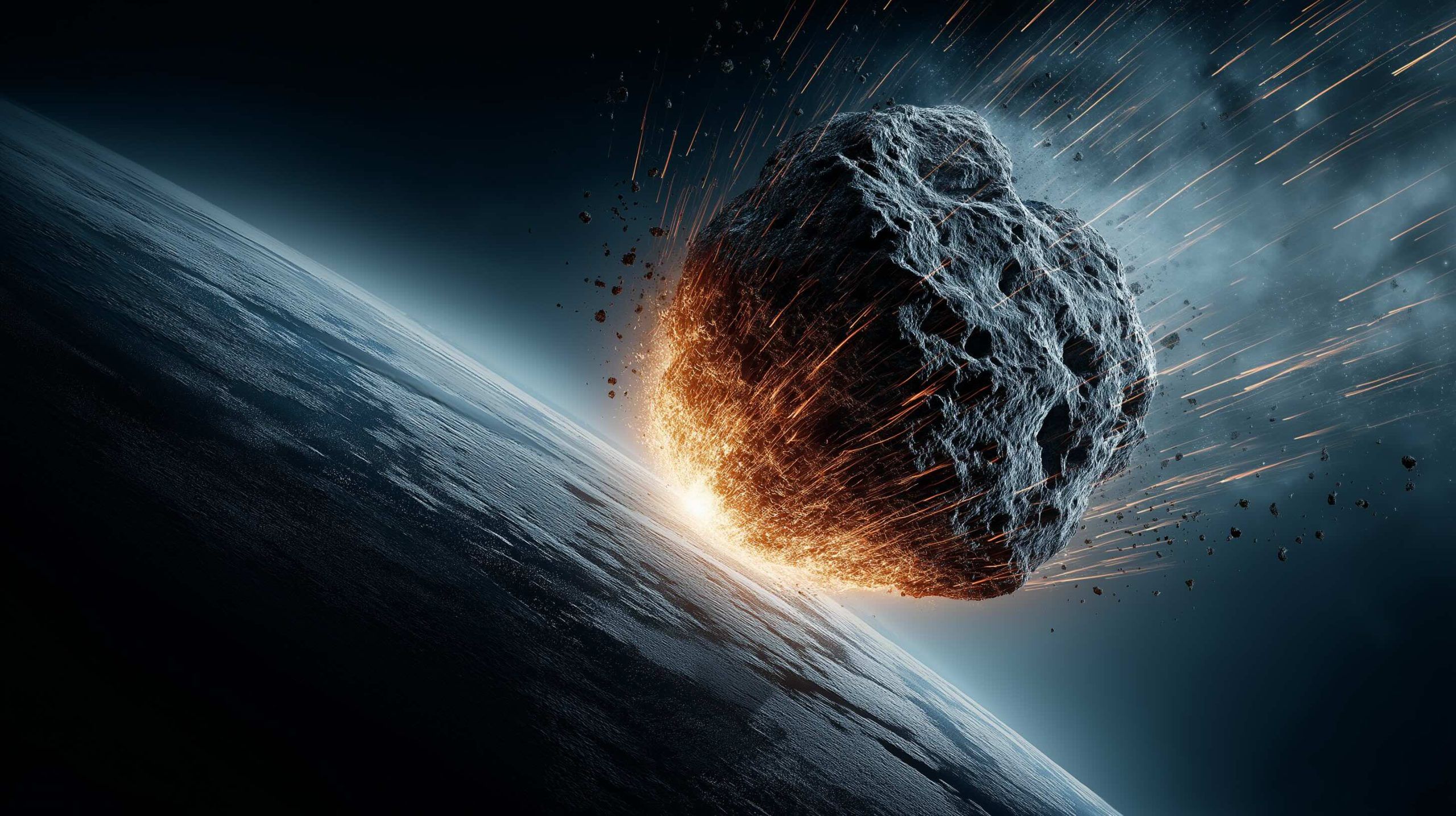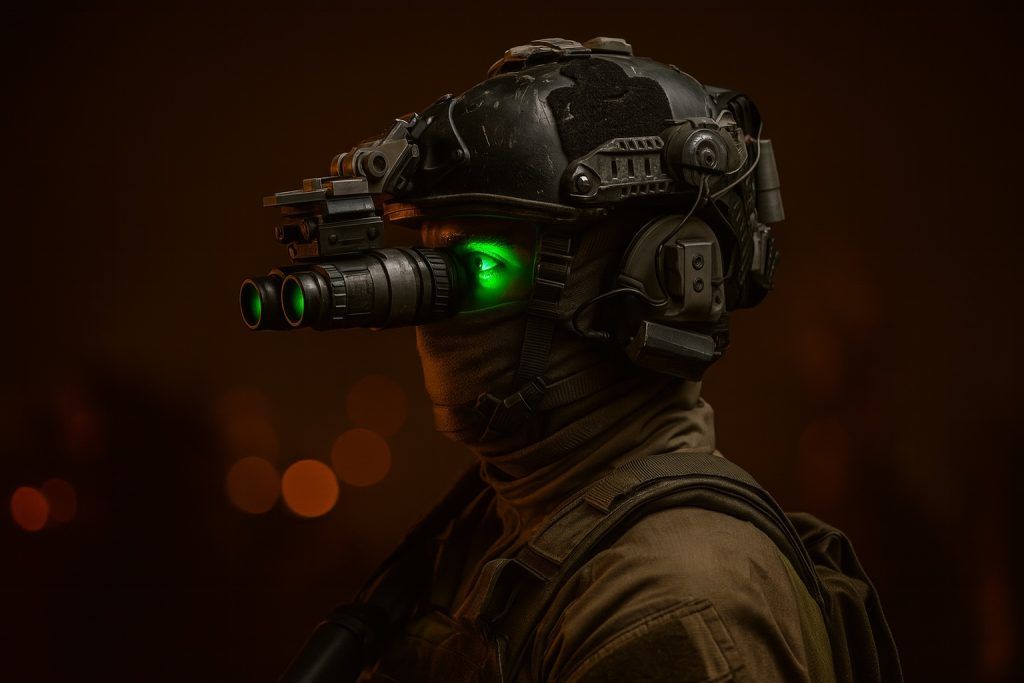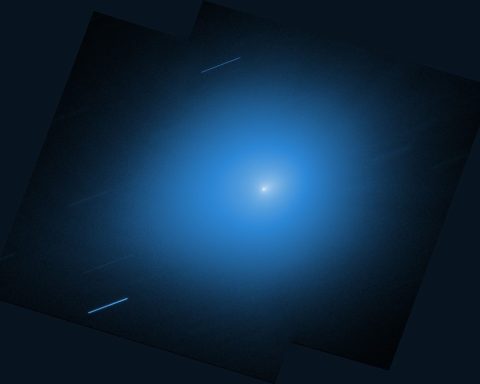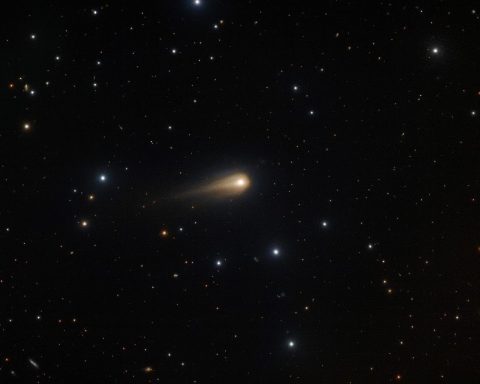- 101955 Bennu (1999 RQ36) is about 490 m in diameter and has a potential impact date of September 24, 2182 with a probability of about 1 in 2,700 (0.037%), though NASA says there is no chance of a hit for at least a century and a 1.4‑billion‑ton TNT impact could trigger an years‑long global “impact winter.”
- 1950 DA is roughly 1.3 km across and could hit on March 16, 2880 with a probability of about 1 in 34,500 (0.0029%), a Palermo value around −2.7, and an energy release of about 75 billion tons of TNT.
- 2023 TL4 is ~330 m in diameter and carried a possible impact date of October 10, 2119 with a probability of ~1 in 181,000 (0.00055%), currently Torino 0 and a Palermo near −3.
- 2007 FT3 is ~340 m across with potential impacts on October 2, 2024 and March 3, 2030, a peak probability of ~1 in 10,000,000 (0.00001%) for 2030, Torino 0, and a Palermo around −5 or lower.
- 1979 XB is ~660 m in diameter and had a possible impact date of December 14, 2113 with probability about 1 in 1,800,000 (0.000055%), classified as a lost asteroid with Palermo ~ −4.6.
- 2010 RF12 is a 5–10 m rock with about a 5–10% chance of impact in 2095, but would likely disintegrate in the atmosphere and is not considered a potentially hazardous object.
- 2024 YR4 is ~60 m and briefly had up to ~3% odds of Earth impact in 2032 (peaking at 3.1% on Feb 18, 2025) before downgrading to essentially zero, with a separate ~4% chance of hitting the Moon in 2032.
- 2023 DW is ~50 m and briefly carried a ~1 in 770 (0.13%) chance of Earth impact on February 14, 2046, but was removed from risk lists by March 16, 2023.
- Apophis (99942) is ~340 m wide and will skim Earth at about 31,000 km on April 13, 2029, with an initial up to 2.7% 2029 impact risk that was ruled out for at least a century and it was moved to the removed objects list.
- In 2022 NASA’s Double Asteroid Redirection Test (DART) demonstrated planetary defense by slamming into the asteroid moon Dimorphos to shorten its orbital period, proving a deflection capability if a dangerous object is found.
Asteroid “Hit List”: The Space Rocks That Could (Theoretically) Collide with Earth
Earth has been in the cosmic crosshairs before – from the dinosaur-killing 6-mile asteroid 66 million years ago to the 1908 Tunguska impact in Siberia. Today, astronomers vigilantly track near-Earth objects (NEOs) to make sure we know of any asteroid or comet with even a slim chance of hitting Earth. In fact, NASA’s automated Sentry system continuously scans for potential future impacts within the next 100 years [1], and as of mid-2025 about 1,800 asteroids are catalogued on European Space Agency’s “Risk List” with some non-zero probability of impact. The good news: none of these known objects pose an imminent threat, and impact chances are almost vanishingly small in every case. As NASA emphasizes, “there are currently no known asteroids of significant size on a collision trajectory with Earth”. But a handful of larger space rocks do merit extra attention due to their non-zero (if extremely low) impact probabilities. Below we’ll meet all the notable cosmic objects that could collide with Earth in the future, how likely (or unlikely) those impacts are, and what their consequences might be.
How Scientists Assess Impact Risk (and Why Odds Tend to Shrink)
Before diving into specific asteroids, it helps to know how scientists figure out the odds of an impact – and why those scary-sounding probabilities often drop to zero with more observations. Modern asteroid tracking follows a careful process:
- Discovery and Initial Orbit Calculation: When a new NEO is discovered and reported to the Minor Planet Center, astronomers measure its positions over a short time. Using these early observations, they calculate a preliminary orbit – essentially, an ellipse around the Sun that best fits the data [2]. However, with only days or weeks of data, the orbit has wide uncertainties. As a result, early calculations may show a “virtual” possibility of the asteroid hitting Earth on a future date, even if the actual path will likely miss [3]. “If you only read the headlines when a new asteroid is discovered, you might get the impression it could hit Earth,” writes astronomer Phil Plait. But initial odds like a 1-in-700 chance (as with asteroid 2023 DW in 2023) are better seen as “99.87% chance it’ll miss”, and “almost inevitably, over time those impact odds will drop even more.” [4] In other words, more data almost always means lower risk.
- Continuous Monitoring – Sentry & Scout: NASA’s Sentry system is an automated collision-monitoring program that scans the latest asteroid catalog for any future Earth impact possibilities [5]. If a newly discovered asteroid’s orbit is even a little uncertain, Sentry will prioritize it for detailed analysis [6]. Any object with a non-zero impact chance (however tiny) is added to Sentry’s online risk table, which lists the most likely encounter date, impact probability, and risk metrics for that object. (These are known as “virtual impactors.”) Meanwhile, NASA’s Scout program acts as a “celestial intruder alert” system that instantly monitors new detections for any imminent impact threat. “By monitoring observations of newly reported space objects, [Scout] can quickly identify potentially dangerous asteroids, then automatically call for follow-ups to calculate a more precise path,” explains JPL’s Paul Chodas. Scout is essentially a rapid early warning tool – it scans the Near-Earth Object Confirmation Page where newly found objects are posted, and if an object could hit Earth within days or weeks, it alerts observers to gather more data immediately. This automation is crucial: as Chodas notes, had Scout existed in 2008, it “would have given early warning” for the asteroid 2008 TC3 that was discovered just 19 hours before impact. (Fortunately 2008 TC3 was only a few meters across and caused no damage.) Together, Sentry and Scout ensure that any worrisome object is quickly identified and closely watched.
- Risk Scales – Torino and Palermo: To communicate impact risk, scientists use two scales. The Torino Scale (0 to 10) is a public-friendly metric that combines probability and potential damage. A Torino rating of 0 means effectively no risk, 1 means a routine discovery with extremely low chance of collision (no public concern warranted), and higher numbers indicate more significant odds or consequences. For instance, an asteroid might be temporarily rated Torino 1 when first found (meaning “the chance of collision is extremely unlikely with no cause for public attention or concern”). Only if the calculated probability rises into the 1%-plus range (and the object is large) would it reach Torino 2, 3, or higher. The Palermo Scale, on the other hand, is used by experts. It quantifies risk relative to the “background” frequency of impacts. A Palermo value of 0 means the threat is equal to the average background risk of an object that size hitting Earth in that timeframe; negative values mean belowbackground (most current cases are far below), while a positive Palermo would indicate above background risk (none of the known objects today are in this category). As an example, when asteroid 2022 AE1 was discovered, it reached a Palermo value of –0.66, which Marco Micheli of ESA’s Near-Earth Object Coordination Center noted was “the highest… we’ve seen in more than a decade”, though still well below a serious threat. (Torino-wise, 2022 AE1 was about a Level 1 event.) The key point: It is very rare for an asteroid to reach Torino Scale 2 or higher upon discovery – and so far, every time it’s happened, further observations have downgraded the threat to Level 0.
- Refinement over Time: As additional telescope observations come in (sometimes augmented by radar measurements), astronomers recompute the orbit and narrow the uncertainty. Usually, the predicted path shifts away from Earth. Richard Binzel, MIT planetary scientist and creator of the Torino Scale, explained this during the recent 2024 YR4 scare: “Torino Scale 1 tells us… new telescopic observations very likely will lead to re-assignment to Level 0.” And indeed, that’s exactly what happens for the vast majority of new asteroids initially tagged with tiny impact odds. The “risk corridor” where an asteroid could hit Earth shrinks and often misses the planet entirely as the orbit solution improves. This was seen with 2023 DW (dubbed the “Valentine’s Day asteroid” in headlines). Initial data in early 2023 gave it about a 1 in 770 chance of impacting on Feb 14, 2046 (Torino 1) [7]. But “over time those impact odds [dropped] even more”, Plait notes, and by mid-March 2023, further observations had completely ruled out any 2046 collision. Similarly, asteroid 2024 YR4 caused a stir in early 2025 with a 3% chance of impact in 2032 – a Torino Level 3 event (the highest Torino rating in many years). But within weeks, the flood of new data reduced the 2032 impact probability to virtually zero, dropping YR4’s Torino rating back to 0.
In short, detecting a new asteroid with a non-zero impact probability is not unusual – ESA’s risk list is essentially a catalogue of such “possible impact” calculations. But the odds almost always evaporate with continued tracking. It’s a process that repeats each time a new object pops up: “we see this sort of ‘OMG’ turning to a ‘never mind’ reaction every time,” quips Plait. Don’t panic; do keep watching the skies.
Now, let’s look at the specific asteroids (and one comet) that have made their way onto experts’ watchlists, and which – however unlikely – are the known cosmic objects that could collide with Earth in the future. We’ll start with the current top risks identified by NASA and ESA, then revisit a few famous cases that were once worrying but have since been ruled out.
The Top Threats on NASA & ESA’s Risk Lists (Tiny Chances, Huge Consequences)
Space agencies classify any asteroid over ~140 meters across that comes within 7.5 million km of Earth’s orbit as a Potentially Hazardous Asteroid (PHA). Many PHAs routinely pass by harmlessly. But a few have very slim impact probabilities calculated for future decades. Here are the most significant ones:
101955 Bennu (1999 RQ₃₆) – The Long-Term Hazard
Size: ~490 m diameter (about 1,600 feet).
Possible Impact Date: September 24, 2182 (with an extended window for potential impacts between 2175 and 2199).
Impact Probability: ~1 in 2,700 (0.037%) chance of impact in 2182. NASA has calculated a cumulative 0.057% chance of impact through 2300, with Sept 2182 being the single most likely date.
Risk Level: Torino Scale 1 (extremely low likelihood; requires no public action, just tracking). Palermo Scale around –1.6 [8], meaning about 4% of the background risk – currently the highest of any known object. In fact, Bennu has recently overtaken Apophis as the asteroid with the greatest calculated risk to Earth (even though that risk is still very small). NASA assures that “there is no chance Bennu will hit Earth for at least a century”, and even in 2182 the odds are over 99.96% that it will miss.
Details: Bennu is a well-known near-Earth asteroid – a “rubble-pile” asteroid shaped like a spinning top – that orbits the Sun every ~1.2 years and passes near Earth each six years or so. It was the target of NASA’s OSIRIS-REx mission, which collected samples from Bennu in 2020 and returned them to Earth in 2023. Decades of tracking (including precision data from OSIRIS-REx) have pinned down Bennu’s orbit with high accuracy. We know it will make a close flyby in 2135, and Earth’s gravity during that encounter could nudge Bennu’s path, making it tricky to predict its course in the 2180s. Based on the latest analysis, the single most concerning date is September 24, 2182, when Bennu could potentially impact Earth. The probability is only 0.037%, but because Bennu is almost 500 meters wide, were it to hit, the effects would be severe.
Scientists recently ran computer simulations of a Bennu-sized impact, and the results are sobering. If Bennu struck land, it could release energy equivalent to ~1.4 billion tons of TNT – enough to devastate a region the size of a small country and cause millions of casualties if it hit a populated area. Beyond the immediate crater, shockwave, and firestorm, a 500-meter impact would loft 100–400 million tons of dust into the stratosphere, potentially triggering a years-long “impact winter” of cooler temperatures, reduced sunlight, and global crop failures. “The solar dimming due to dust would cause an abrupt global ‘impact winter’… characterized by reduced sunlight, cold temperature and decreased precipitation,”says climate physicist Lan Dai, lead author of a 2025 study on Bennu’s potential effects. Their models show Earth’s average surface temperature could drop ~4 °C and rainfall by 15% for 3-4 years. In short, Bennu is a serious “what if” scenario – comparable to a massive volcanic eruption or the asteroid impact in 1908 that flattened 800 square miles in Tunguska, Siberia (Bennu is about the same size as that Tunguska object). As climate scientist Axel Timmermannnotes, “even though [the impact likelihood] is quite small at 0.037%, the potential impact would be very serious”, likely causing “massive longer-term food insecurity” worldwide.
On the bright side, Bennu is being intensely studied (its sample even contained organic molecules and water-bearing clays, offering clues to the origins of life). And thanks to missions like OSIRIS-REx, we have years of advance warning to develop deflection strategies if future generations need to. “In 2135, we’ll know for sure” whether Bennu’s path is safely altered or requires intervention. For now, Bennu remains a poster-child for why asteroid monitoring matters – a very unlikely catastrophe, but one we can predict far in advance.
29075 (1950 DA) – The Doomsday Rock of 2880
Size: ~1.3 km diameter (0.8 miles), roughly 4 times larger than Bennu.
Possible Impact Date: March 16, 2880. This is an extraordinarily far-future date – 855 years from now – but it’s the only time in the next millennium that this asteroid’s orbit is calculated to have a chance of hitting Earth.
Impact Probability: ~1 in 34,500 (≈0.0029%) chance in 2880. This corresponds to a Palermo Scale of about –2.7, and effectively Torino Scale 0 (the event is so distant in time that Torino scale – defined for 0–100 years – doesn’t directly apply, but if it did, the chance is extremely low).
Risk Level: Very low – currently the second-highest risk object on NASA’s Sentry list by computed hazard, after Bennu. Scientists consider 1950 DA noteworthy because even a 0.003% chance of a 1.3 km asteroid impact is worth monitoring (1.3 km is above the ~1 km threshold for global catastrophe). But practically speaking, 1950 DA’s risk is farin the future and will likely be revised many times in the coming centuries.
Details: Asteroid 1950 DA has a fascinating history. It was first discovered in 1950, observed for 17 days, and then lost(no one tracked it for decades). Only in 2000 was it “rediscovered” and identified as the same object, allowing a much better orbit to be determined. It’s thought to be a “rubble-pile” asteroid loosely held together by gravity – in fact, studies suggest it rotates so fast (~2.1 hours period) that some kind of cohesive forces might be preventing it from flying apart. The impact scenario in 2880 arises from orbital calculations that include small forces like the Yarkovsky effect (the slight push an asteroid gets from absorbing sunlight and re-radiating heat). Originally, 1950 DA had an even higher estimated impact probability (~0.3%), but by 2015 astronomers refined the odds down to ~0.03%, and further refinements now put it under 0.003%. It remains on the risk list as a curiosity: an object over a kilometer wide (capable of global effects) with a calculable, if minute, chance to hit us on a specific day in 2880.
Were 1950 DA to strike Earth, the effects would indeed be catastrophic. Scientists estimate the impact would release energy equivalent to ~75 billion tons of TNT – enough to “trigger a global catastrophe” potentially wiping out humanity. That’s on the order of the event that ended the dinosaurs (though the dino-killer was larger at ~10 km, a 1.3 km impact could still cause global firestorms and climate collapse). Thankfully, the odds of this happening are exceedingly remote, and future generations will have centuries to alter 1950 DA’s course if needed. For now, it’s a reminder that even “removed” or long-term threats stay on scientists’ radar. As of 2025, 1950 DA is listed right behind Bennu on Sentry’s rankings, but with a probability an order of magnitude smaller. We can safely say Earth is not on a fixed collision course with this one – but it’s one to keep an eye on over the next few hundred years.
2023 TL₄ – Newcomer to the Risk List
Size: ~330 m in diameter (about 0.2 miles), comparable to the Eiffel Tower’s height.
Possible Impact Date: October 10, 2119.
Impact Probability: ~1 in 181,000 (0.00055%) for 2119.
Risk Level: Very low (Torino Scale 0). This asteroid nonetheless grabbed attention because it was discovered only in October 2023 and immediately jumped to a high position on ESA’s risk list – at one point it was the second-highest risk PHA in the rankings. Its Palermo value is around –3, and it remains under observation.
Details: 2023 TL₄ is a case study in how a newly found asteroid with little tracking data can temporarily cause concern. Astronomers spotted it in early October 2023, and within two weeks of observation (Oct 8–19) computed that it couldintersect Earth’s orbit in 2119. The chance was on the order of a few in 100,000 – tiny, but enough to stand out statistically. In fact, ESA’s Near-Earth Object Coordination Centre noted that 2023 TL₄ “reached the second position on our risk list” for a while, just below Bennu. With a diameter ~300+ meters, if 2023 TL₄ were ever to hit, it would pack a punch: on the order of 7.5 billion tons of TNT in energy release [9], causing massive regional damage (though probably not global devastation).
However, it’s important to remember that such early risk assessments come with large uncertainties. 2023 TL₄’s orbit is still being refined, and as more data come in over the next years, scientists expect the impact probability to be revised (most likely downward). At 94 years out, there’s ample time to observe future passes and eliminate any risk. For now, TL₄ remains noted as a potential hazard for 2119, but with a 99.99945% (almost certain) chance of a miss. It illustrates how even a newly discovered asteroid can “immediately become one of the most potentially hazardous”known, as one science writer put it [10] – but also how those odds are still extremely low. TL₄ is under close watch by the planetary defense community due to its size, but there is no cause for public worry.
2007 FT₃ – The Lost Asteroid with a Lottery-Ticket Chance
Size: ~340 m diameter (estimated), similar to 2023 TL₄.
Possible Impact Dates: October 2, 2024 and March 3, 2030 were two dates initially identified. (October 2024 has passed without incident – as expected given the minuscule odds – and March 2030 remains on paper as an extremely unlikely potential impact.)
Impact Probability: ~1 in 11,000,000 (0.0000096%) for 2030. An earlier 2024 impact chance was even lower (1 in 11.5 million). Essentially zero, within rounding error – but not strictly zero, so 2007 FT₃ stayed on risk lists for years.
Risk Level: Torino Scale 0, Palermo about –5 or lower. It’s considered a “lost” asteroid, meaning we haven’t observed it since its discovery in 2007. Thus its orbit is poorly constrained, which is the only reason any impact probability exists (if we knew its trajectory better, we could likely rule out the Earth encounters entirely).
Details: 2007 FT₃ was discovered in 2007 and quickly calculated to have extremely low-probability potential impacts in 2024 and 2030. After its initial discovery observations, it hasn’t been seen again – it’s a dark, distant rock that slipped out of view, perhaps not to be recovered until it comes closer. Because of this, our knowledge of its orbit has a wide uncertainty zone. Based on what could happen, NASA had estimated a 1 in 10 million chance of impact in 2030 (and an even tinier chance for 2024). To put that in perspective, that’s like a 0.00096% chance – akin to winning a lottery jackpot twice in a row. Not surprisingly, October 2024 came and went with no sign of 2007 FT₃ (it likely passed at a safe distance, as predicted). The March 2030 scenario also has virtually no realistic chance of occurring. If it were on a collision path, we would likely have detected it again by now during routine surveys. The fact that it remains unseen suggests it is not headed straight for us in 2030 (or we’d be able to find it on approach).
So why mention it at all? Mainly because 2007 FT₃ often appears on lists of “dangerous asteroids” due to its large size and the theoretical 2030 impact. It highlights how the risk list can include objects that haven’t been observed for years, carrying a ghost of a possibility only because of uncertainty. NASA labels such cases “lost” or “not well constrained”. The prudent approach is to keep them noted until we either re-acquire the asteroid (and refine its orbit) or pass the potential impact date. In 2007 FT₃’s case, 2030 is the last noted risk. If it misses (which it almost certainly will), the risk will be removed. For now, it sits with a formal 1-in-10-million chance, equating to 99.99999% confidence Earth is safe. Not bad odds!
1979 XB – Another Lost Rock with Distant Prospects
Size: ~660 m diameter (0.4 miles) [11], making it the largest of this group.
Possible Impact Date: December 14, 2113.
Impact Probability: ~1 in 1,800,000 (0.000055%) for 2113 [12].
Risk Level: Torino Scale 0. Like 2007 FT₃, asteroid 1979 XB has not been observed in decades – in fact, not since 1979 – so its orbit is highly uncertain. Its Palermo rating is around –4.6, and it’s considered a lost PHA that lingers on risk lists out of caution.
Details: Discovered in December 1979, this asteroid was observed for only a short time and then lost. It’s believed to be roughly 600–700 meters wide, which is significant. Based on the limited data from 1979, scientists computed a very small chance that 1979 XB could hit Earth in 2113 [13]. The probability, about 1 in 1.8 million, is essentially negligible – but since we lack current observations to completely rule it out, it remains catalogued as a potential impactor.
1979 XB underscores the challenge of “lost” asteroids: back in the late 20th century, sky surveys were less comprehensive, and it was easier to lose track of objects. Today, with advanced telescopes scanning the sky nightly, it’s unlikely a 600 m asteroid would go unobserved for so long. At some point, 1979 XB might be re-detected (perhaps by upcoming asteroid surveys like the Vera Rubin Observatory’s LSST in a few years) and then we’ll know quickly if it poses any risk. Given the incredibly small odds and distant date, no one is losing sleep over 1979 XB – but it’s on the books. If it were to hit in 2113 (again, exceedingly improbable), it would release an energy on the order of 30 billion tons of TNT [14], cause a crater several kilometers wide, and have severe global consequences (though likely not full extinction). But the safe bet – which we can say for all these objects – is that it will miss. Our descendants in the 22nd century will almost surely only know 1979 XB as a curious footnote in the annals of asteroid tracking.
The table below summarizes the key statistics of the currently known potentially hazardous objects (PHOs) with non-zero impact probabilities. These represent the “top tier” of risk-listed asteroids in terms of chance and size. (Note: All of these probabilities are so small that they round to zero – but we list them to compare relative risk.)
| Object (Designation) | Size (Diameter) | Potential Impact Date | Impact Probability | Risk Level (Torino) |
|---|---|---|---|---|
| 101955 Bennu (1999 RQ₃₆) | ~490 m (1,600 ft) | Sept 24, 2182 | 1 in 2,700 (0.037%) | 1 (extremely low) |
| 29075 (1950 DA) | ~1,300 m (0.8 mi) | Mar 16, 2880 | 1 in 34,500 (0.0029%) | 0 (effectively none) |
| 2023 TL₄ | ~330 m (1,080 ft) | Oct 10, 2119 | 1 in 181,000 (0.00055%) | 0 (none) |
| 2007 FT₃ | ~340 m (1,115 ft) | Mar 3, 2030 | ~1 in 10,000,000 (0.00001%) | 0 (none) |
| 1979 XB | ~660 m (2,165 ft)* [15] | Dec 14, 2113 | 1 in 1,800,000 (0.000055%) [16] | 0 (none) [17] |
Sources: NASA/ESA risk lists as compiled in. (Sizes marked with an asterisk are estimates based on brightness, as these objects’ exact sizes are uncertain due to limited observations.) All listed objects are currently classified as Torino Scale 0(“No Hazard”), except Bennu which is Torino 1 (a normal, very low risk discovery). In every case, ongoing observations are expected to further reduce or eliminate the impact probability.
Recent “False Alarms” and Removed Threats
The objects above are currently on the risk list. But you may have heard of some scary asteroids in the news that turned out not to be threats after all. Planetary defense has had a few dramatic episodes of asteroids briefly deemed dangerous, then downgraded to zero risk with better data. Here are some notable cases of asteroids that once gave us a scare:
- 99942 Apophis (2004 MN₄): Perhaps the most famous asteroid scare. Apophis is ~340 m wide and made headlines in 2004 when initial calculations suggested up to a 2.7% chance of impact on April 13, 2029 – an unprecedented Torino Scale Level 4 alert at the time [18]. For several days, Apophis topped NASA’s risk chart as a potentially catastrophic impactor. “Discovered in 2004, Apophis was quickly identified as one of the most hazardous asteroids that could impact Earth,” NASA noted [19]. Fortunately, as weeks of follow-up observations came in, scientists ruled out the 2029 impact and later also eliminated a potential 2036 impact [20]. Until recently, a very small chance for April 2068 kept Apophis on risk lists at Torino 1. But in March 2021, a gold-standard radar campaign nailed down Apophis’s orbit during a distant flyby. The result: “there is no risk of Apophis impacting Earth for at least a century,” announced JPL’s Davide Farnocchia [21] [22]. “A 2068 impact is not in the realm of possibility anymore,” he said, and Apophis was officially moved to the “removed objects” list [23]. This was a huge relief, because Apophis is set to skim past Earth on Friday, April 13, 2029 at just 31,000 km distance – closer than many satellites. It will be a spectacular show (visible to the naked eye for millions of people), but totally safe. Earth’s gravity will tug Apophis’s trajectory, but we now know it will not hit us in any foreseeable future [24]. Apophis’s saga had a happy ending: what started as a potential doomsday turned into a scientific opportunity. NASA and other agencies are even planning observation missions during the 2029 flyby to study Apophis up close. Apophis taught us that early odds can be misleading – and it energized the field of planetary defense. (It’s also a pop-culture star now; but any movies depicting Apophis hitting Earth are thankfully fiction!)
- Asteroid 2024 YR₄: This small (~60 m) asteroid provided a dramatic roller-coaster in late 2024 and early 2025. Discovered on Dec 27, 2024, YR₄ initially appeared to have over a 1% chance of hitting Earth on Dec 22, 2032. That might not sound high, but it raised the Torino Scale to Level 3 – “a close encounter, with 1% or greater chance of a collision capable of localized destruction”. It was the first Torino 3 event in many years. “In my almost 10 years at ESA I’ve never seen such a risky object,” said Marco Micheli, recalling the moment data showed YR₄’s Palermo scale was the highest in a decade. The probability even peaked at 3.1% (1 in 32) on Feb 18, 2025, making 2024 YR₄ temporarily “the most risky asteroid in the history of NASA’s CNEOS Sentry Risk Table”. This triggered a strong response: observatories worldwide (and even the James Webb Space Telescope) jumped in to gather more data. As expected, each new batch of observations shrank the odds. By Feb 20, 2025, NASA announced the impact chance had dropped to 0.28% (1 in 360). That downgrade put YR₄ at Torino Scale 1 – “extremely unlikely collision, no cause for public concern” – and further observations soon pushed the probability to effectively zero. By late February 2025, YR₄ was definitively ruled out as an Earth impact in 2032. However, the saga had a surprise twist: eliminating an Earth hit meant the asteroid’s path might instead intersect the Moon. As of mid-2025, there remains a ~4% chance YR₄ could strike the Moon in 2032. This would be unprecedented – the Moon is a much smaller target, so impacts are rarely predicted there. Such an impact (if it happened) wouldn’t threaten Earth at all, but it has scientists intrigued. A lunar hit by a 60 m asteroid would blast out a ~1 km crater and throw some debris into space. “A 2024 YR₄ impact on the moon would pose no risk to anything on Earth – our atmosphere will shield us,” astronomer Paul Wiegert notes. “But the impact could pose some danger to equipment or astronauts on the Moon, and certainly to satellites and other Earth-orbiting platforms,” he told Space.com. Even a small percentage chance of a lunar impact has led to intriguing studies about the possible ejecta (rock debris) that would rain down and perhaps create intense meteor showers on Earth. Regardless, for Earth the coast is clear – YR₄ will not be our problem in 2032. It’s a textbook example of the system working: early warning, lots of follow-up, and ultimately, no danger to Earth. YR₄ was officially downgraded to Torino 0 (no hazard) and removed from the threat lists in 2025.
- 2023 DW (The “Valentine’s Day Asteroid”): This was a media favorite in early 2023. Discovered Feb 26, 2023, 2023 DW is ~50 m across (similar to the Tunguska impactor). Within days, initial orbit solutions suggested a possible rendezvous with Earth on Feb 14, 2046 – yes, Valentine’s Day – with roughly a 1 in 770 chance of impact [25]. NASA gave it a Torino Scale 1 rating (normal “we’ll track it, but no cause for alarm”) [26]. Nonetheless, headlines popped up about a “potential 2046 asteroid impact,” understandably spooking the public. Veteran astronomers were much more relaxed. “First of all, a 1 in 770 chance… is better thought of as a 99.87% chance it’ll miss,” Phil Plait quipped. And indeed, further observations quickly improved the outlook. Because 2023 DW had been observed during a tricky period (it passed near the Sun from Earth’s viewpoint, then the moon’s glare interfered), there was a brief gap in data. But by mid-March 2023, both ESA and NASA had gathered enough new observations to eliminate any 2046 impact scenario. On March 16, 2023, 2023 DW was formally removed from risk lists [27]. It was on the books for barely three weeks – a short-lived “threat” that turned into a case study of how not to panic. (Incidentally, an independent astronomer, Piero Sicoli, had already calculated even at first that the chance was at most 1 in 400 and projected the asteroid would likely miss by ~1 million km – which turned out to be correct.) NASA’s Planetary Defense Coordination Office tweeted to reassure folks that “2046 [is] not a real worry” – and they were right. 2023 DW is now just a footnote, with 2046 expected to be a normal Valentine’s Day… no asteroid crash scheduled.
- 2022 AE₁: In early January 2022, this ~70 m asteroid raised eyebrows because initial calculations indicated a possible impact in July 2023 – only 18 months away, “too soon to launch a deflection mission” as one report noted grimly. The odds were low (about 1 in 1,700 at peak) but this gave 2022 AE₁ the highest Palermo Scale rating in over a decade (–0.66). “In my 10 years at ESA I’ve never seen such a risky object,” ESA’s Marco Micheli recalled of that tense week. What made it intense was the timing: after discovery on Jan 7, 2022, the asteroid’s risk rating was rising – then the full Moon’s glare prevented further observations for a week. Astronomers had to wait, unable to refine the orbit. Some media called it the most dangerous asteroid since Apophis. Thankfully, when the moon moved away and 2022 AE₁ was reacquired, the updated orbit showed it would miss Earth by 10 million km in 2023. “When 2022 AE₁ re-emerged, new observations… eventually proved the space rock would avoid our planet,” ESA reported, passing at over 20 times the Earth–Moon distance. The asteroid was promptly removed from risk lists by late January 2022. What’s striking is how routine the process was: ESA and NASA immediately put global telescope networks on the case. “As is custom in these cases, we activated our network of telescopes… and it soon seemed this asteroid was unlike any other we’d seen,” said Luca Conversi of ESA, referring to that brief period of uncertainty. In the end, 2022 AE₁ was a non-threat. But it was a valuable drill – it showed the coordination and communication in the planetary defense community working swiftly.
- Others: There have been other brief scares: Asteroid 2011 AG₅ was flagged for a possible 2040 impact (with Torino 1) until 2012 observations ruled it out. 2007 VK₁₈₄ had a ~1 in 3,000 chance for 2048, worrying some in 2007–2008, but was removed from the risk list by 2014. Going further back, 2004 MN₄ was the provisional name for Apophis (which we covered above). 2002 NT₇ made a media splash in 2002 as the first asteroid briefly rated above Torino 0 – initial reports suggested a tiny chance of a 2019 impact – but within days it was proven safe. And one of the most famous false alarms was 1997 XF₁₁: in March 1998 an astronomer’s prediction of a potential 2028 impact made front-page news, but within hours NASA’s team found earlier images of the asteroid and ruled out the impact completely. That incident led to improved protocols in how asteroid risk information is released to the public. Each of these cases reinforces the same lesson: asteroid impacts are extremely rare and difficult to predict at first, but with patience and better data, the danger almost always disappears.
The “Highest Odds” Asteroid Isn’t a Big Threat at All
Interestingly, the object with the greatest known probability of hitting Earth is not any of the asteroids above – it’s a tiny near-Earth asteroid called 2010 RF₁₂. This school-bus-sized rock (about 5–10 m in diameter) has about a 5–10% chanceof impact in the year 2095, according to NASA’s calculations. That probability (roughly 1 in 20) sounds alarming, but here’s the catch: 2010 RF₁₂ is only ~7 m across, far below the size threshold to do serious damage. If it hits, it would likely disintegrate in the atmosphere or cause only a limited airburst. (For comparison, the 2013 Chelyabinsk meteor in Russia was ~20 m and injured people mainly with window glass from the shockwave, and did not cause any direct fatalities.) Because of its small size, 2010 RF₁₂ is not even considered a potentially hazardous object, and it never got a Torino rating above 0. It’s monitored simply out of scientific interest. This paradox highlights how impact probability alone doesn’t equal danger – one must also consider the asteroid’s size (and thus impact energy). While 2010 RF₁₂ currently boasts the highest impact odds of any known object, its potential impact energy is on the order of only 0.008 megatons (8,000 tons of TNT) – a tiny fraction of the yield of a nuclear bomb, and much smaller than the Tunguska or Chelyabinsk events. So it poses little threat. It’s a useful data point for statisticians, but not a civilization-ending rock by any means.
How We’re Staying Safe: Ongoing Vigilance and Preparedness
The landscape of known risky asteroids can and will change. New discoveries happen literally every night – over 20,000 near-Earth asteroids have been catalogued so far, and surveys are finding ~3,000 new NEOs per year. With upcoming projects like the Vera Rubin Observatory and NASA’s NEO Surveyor space telescope, we expect to detect the vast majority of threatening asteroids in the coming decade. As this happens, you might occasionally hear of a new asteroid with a “non-zero” impact probability. Don’t be surprised: this is exactly what the search programs are designed to find. Remember that “non-zero” almost always means “extremely close to zero” – but discovering these objects early gives us time to watch and, if ever necessary, take action.
Indeed, the world’s space agencies aren’t just twiddling their thumbs. In 2022, NASA conducted the Double Asteroid Redirection Test (DART), the first real planetary defense experiment. The DART spacecraft slammed into a small asteroid moon (Dimorphos) to test our ability to deflect an asteroid’s orbit. The test was a success, shortening Dimorphos’s orbit around its parent asteroid. This was a proof of concept that if we did find a truly dangerous asteroid, we have the technology (and international will) to try to nudge it off course. “NASA… [is] innovating for the benefit of humanity” and actively preparing so that we “could [protect] Earth” if the need arises.
Additionally, organizations like the International Asteroid Warning Network (IAWN) and the United Nations-endorsed Space Mission Planning Advisory Group (SMPAG) ensure that globally, we’re coordinated in response to any asteroid threat. In the case of 2024 YR₄, for example, the moment the probability topped 1%, that threshold triggered a higher level of planetary defense response – observatories worldwide mobilized and discussion of potential mitigation began at the international level. This shows that the system is alert and ready even for a few-percent-chance threat.
In Summary:
While Hollywood may enjoy spinning tales of killer asteroids arriving unannounced, the reality in 2025 is far more reassuring. All known asteroids with any chance of hitting Earth have extremely low probabilities – none higher than a fraction of a percent, and most virtually zero. The big ones (Bennu, 1950 DA, etc.) are decades to centuries away from possible encounters, giving us ample time to refine their orbits and plan missions if needed. Many formerly alarming objects like Apophis have been proven safe through diligent observations. And ongoing surveys continue to fill in the inventory of hazardous asteroids, increasing our confidence that no surprise extinction-level impact is looming.
As NASA’s Planetary Defense officers like to say, “keep calm and carry on” – but also, keep looking up. Each new discovery and each risk list update is a testament to our growing ability to detect and deal with cosmic hazards. The Earth has been in the cosmic shooting gallery for billions of years; now, at long last, we have the knowledge and means to do something about it. Every rock on this “asteroid hit list” is under watch. In the very unlikely event one ever does line up on a collision course, humanity will not be caught off guard.
So, the next time you see headlines about an asteroid with a chance to hit Earth, you can confidently remember: the experts have it in hand, the odds are overwhelmingly that it will miss, and plans are in the works to ensure Earth stays safe from these celestial wanderers. Our planet is not defenseless, and vigilance is high.
Sources:
- NASA Center for Near-Earth Object Studies (CNEOS) – Sentry Risk Table and Planetary Defense updates
- European Space Agency – NEOCC Risk List and official updates
- Space.com – reporting on asteroid discoveries and risk assessments
- Live Science – “5 Most Dangerous Asteroids” summary (Bennu, 1950 DA, TL₄, etc.)
- Reuters – coverage of Bennu impact effects study
- Scientific American – explanation of impact probability calculations (Phil Plait) [28]
- NASA Planetary Defense Coordination Office – quotes and press releases (e.g. Farnocchia on Apophis) [29] [30]
- Statements from scientists: Richard Binzel on Torino Scale, Marco Micheli and Luca Conversi (ESA) on 2022 AE₁, Paul Wiegert on 2024 YR₄’s lunar impact scenario, Axel Timmermann on Bennu’s risk, etc.
References
1. scorptech.github.io, 2. scorptech.github.io, 3. www.scientificamerican.com, 4. www.scientificamerican.com, 5. scorptech.github.io, 6. scorptech.github.io, 7. www.scientificamerican.com, 8. neo.ssa.esa.int, 9. www.livescience.com, 10. www.livescience.com, 11. www.livescience.com, 12. www.livescience.com, 13. www.livescience.com, 14. www.livescience.com, 15. www.livescience.com, 16. www.livescience.com, 17. www.livescience.com, 18. www.nasa.gov, 19. www.nasa.gov, 20. www.nasa.gov, 21. www.nasa.gov, 22. www.nasa.gov, 23. www.nasa.gov, 24. www.nasa.gov, 25. www.scientificamerican.com, 26. www.scientificamerican.com, 27. en.wikipedia.org, 28. www.scientificamerican.com, 29. www.nasa.gov, 30. www.nasa.gov










